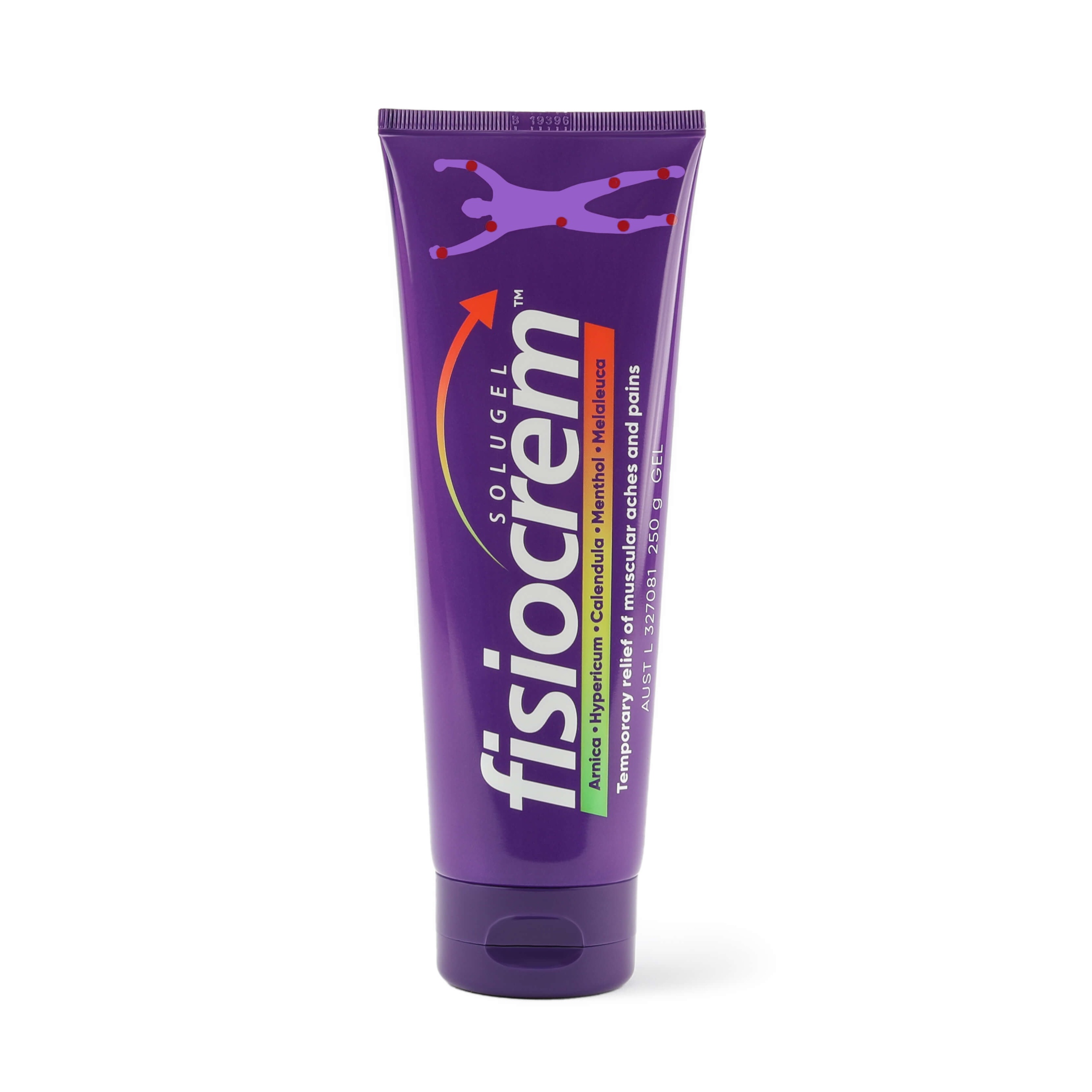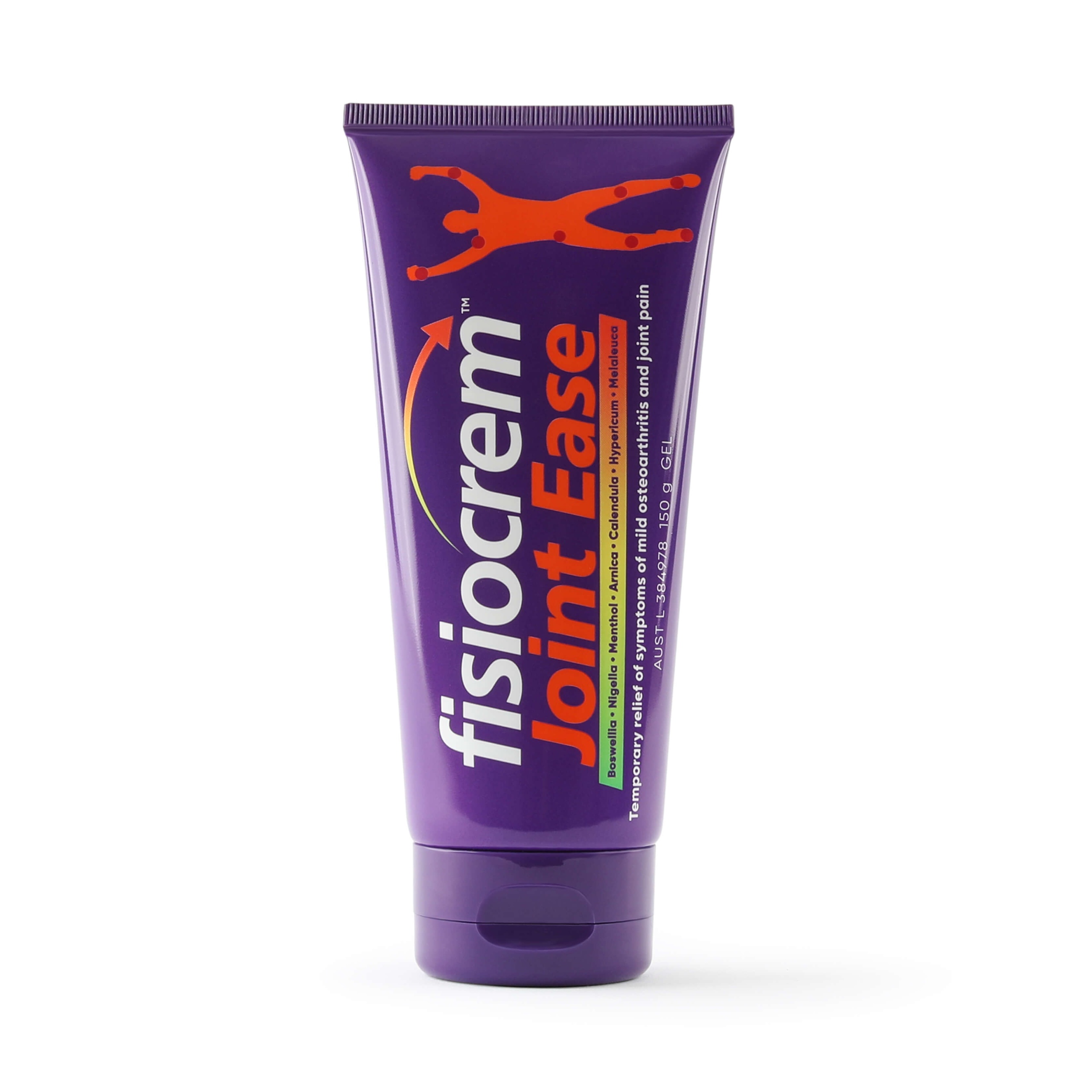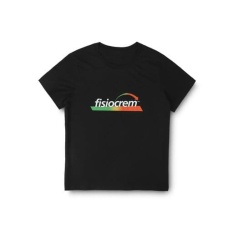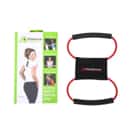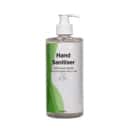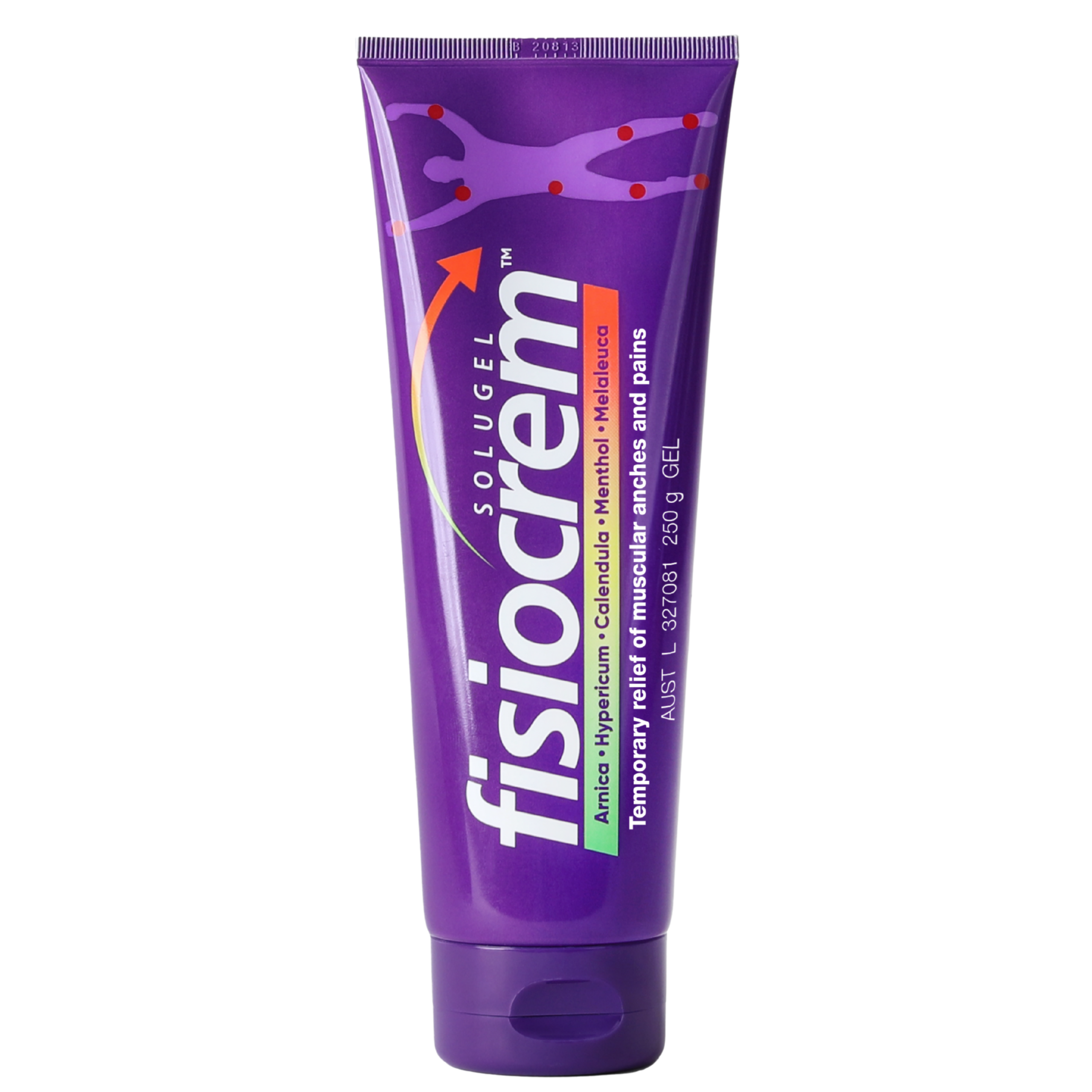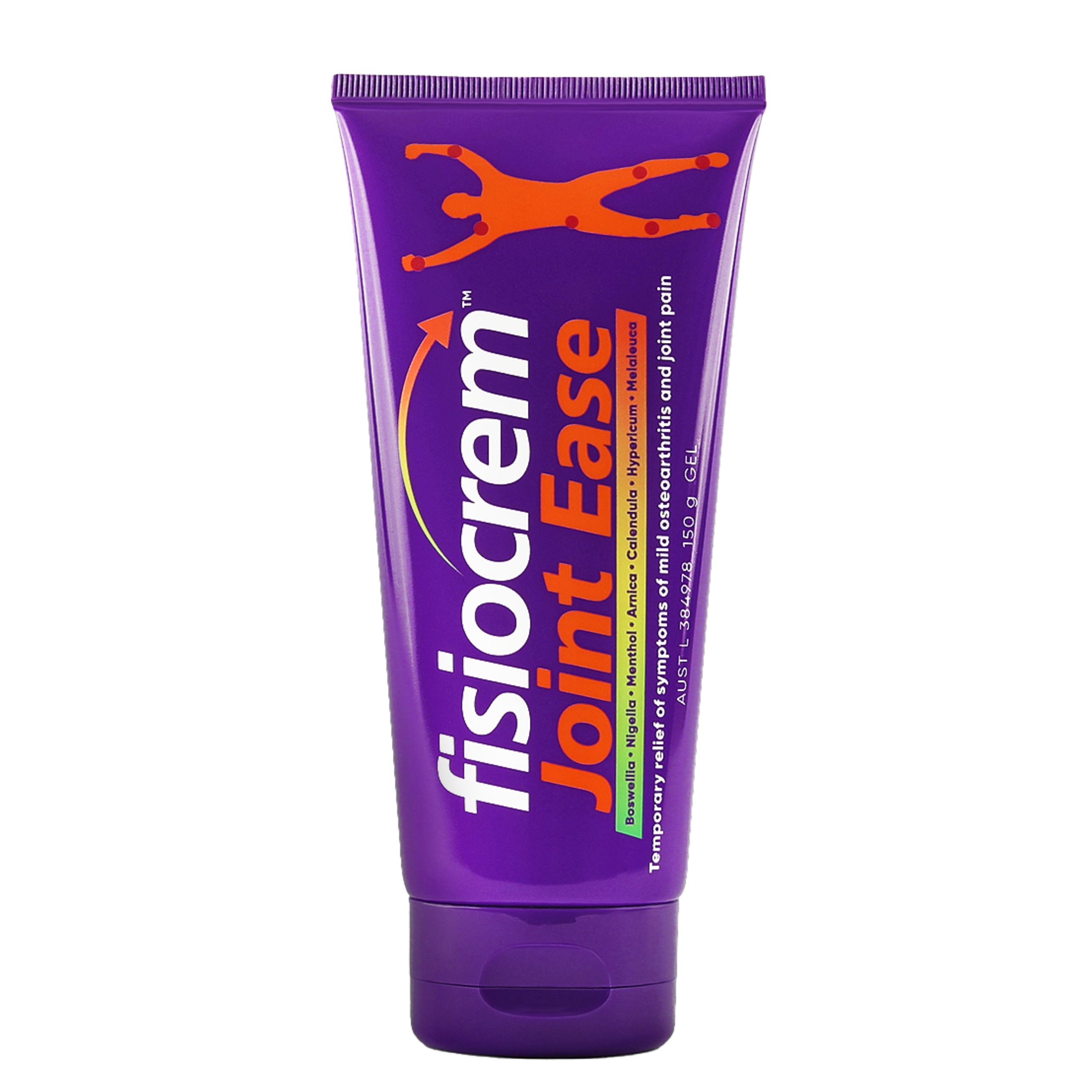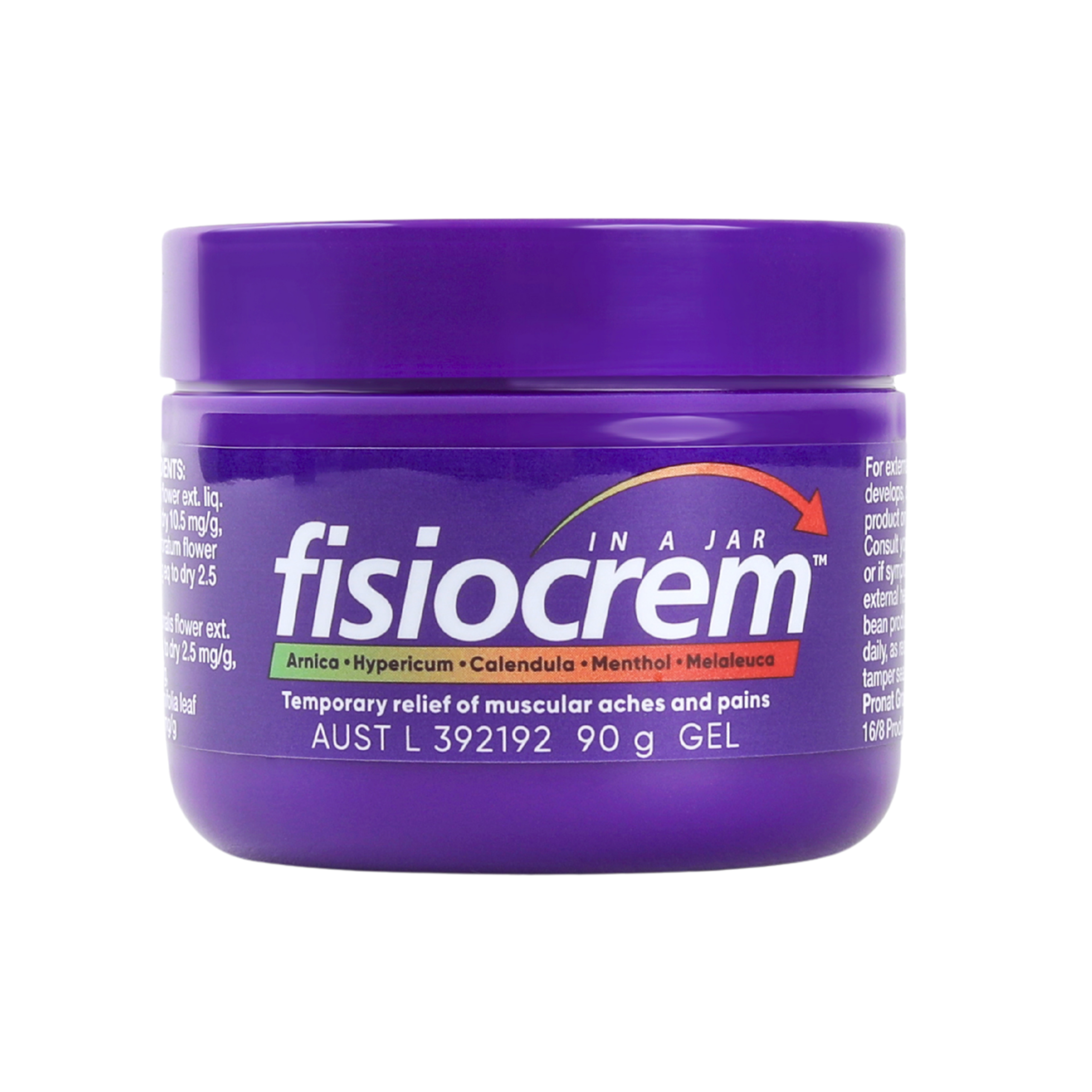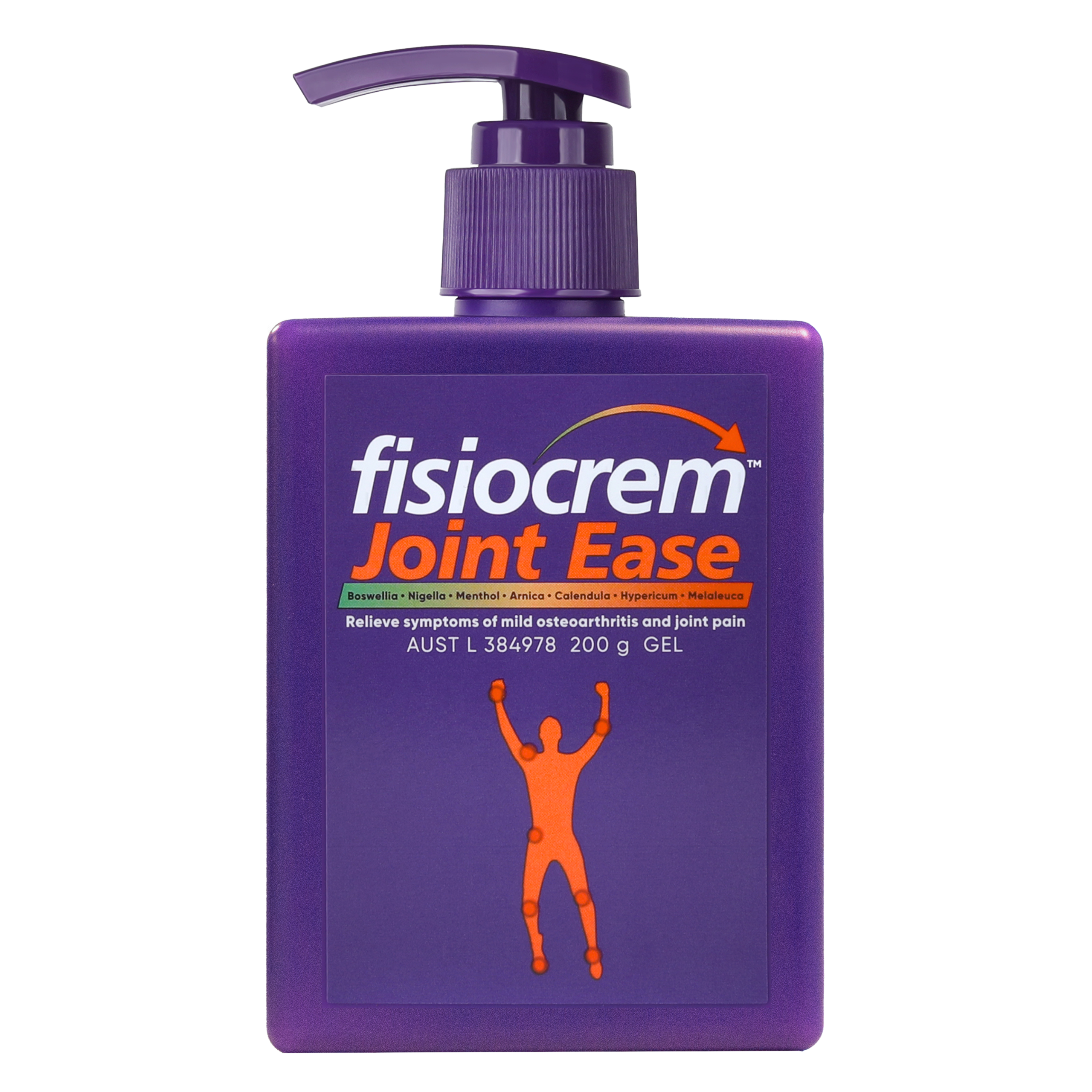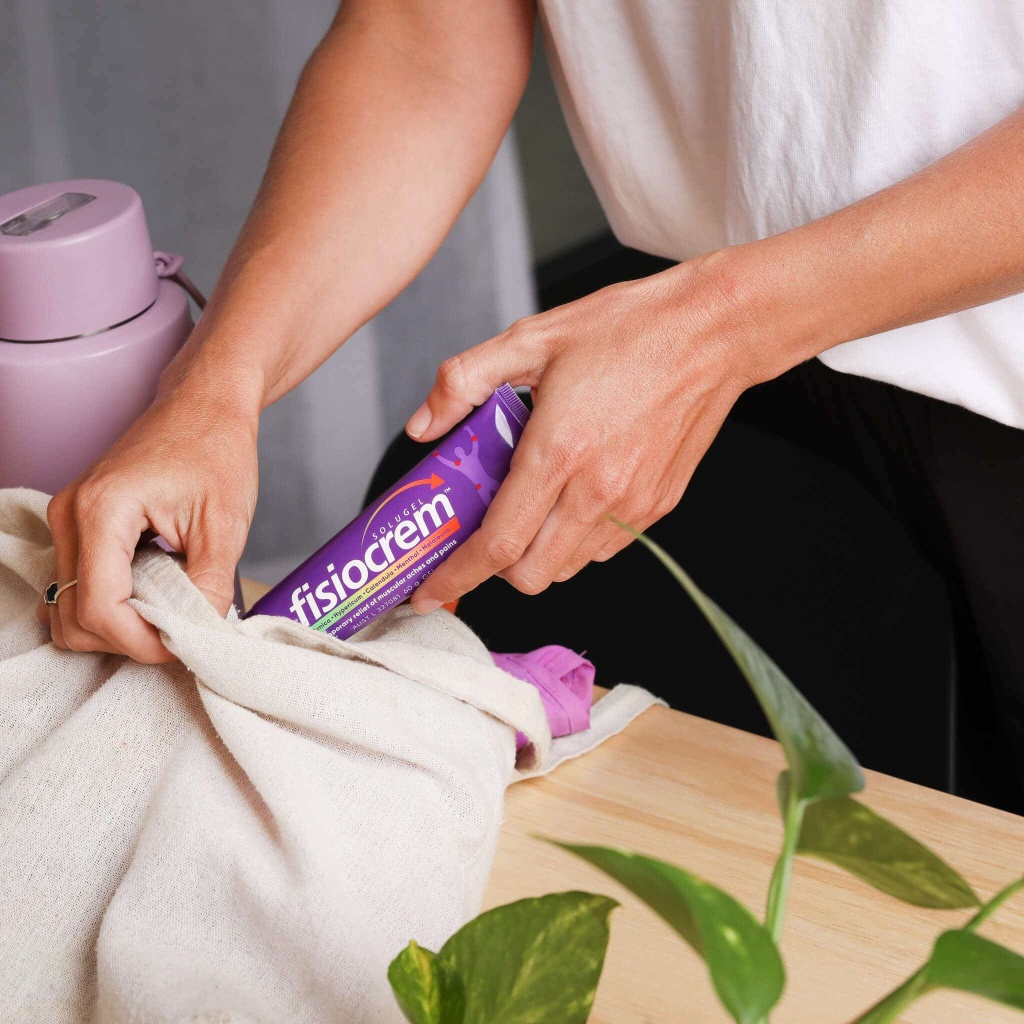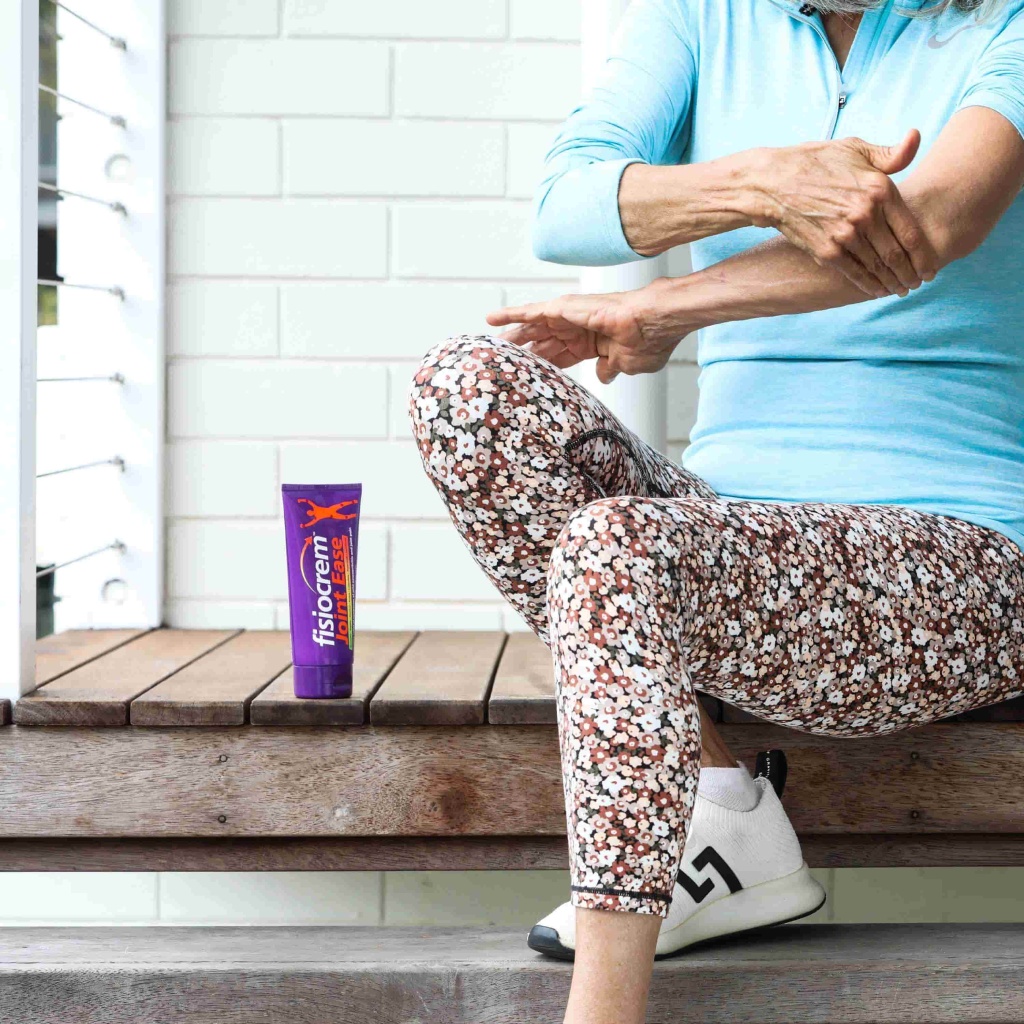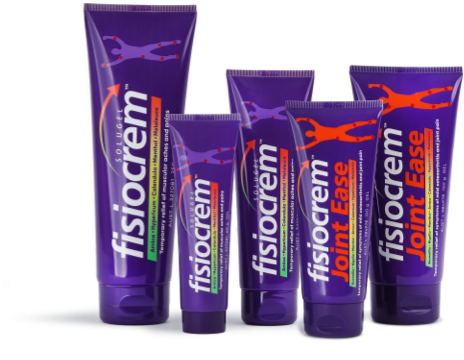Introducing fisiocrem sponsored athlete Christian Bissacco. What started as a love for cycling in Italy has evolved into a full-blown passion for becoming an Obstacle Course Racer (OCR). For Christian, it’s more than just a sport, it’s a powerful blend of strength, endurance, and adaptability. Ironically, running was once his least favourite activity. Now, it’s become the backbone of his training, helping him conquer dynamic courses that test both physical and mental limits.
This past year was a standout for Christian. He immersed himself in Sydney’s vibrant run club scene, finding motivation, camaraderie, and inspiration among like-minded individuals. One of his proudest accomplishments was founding the Wolli Creek Run Club (WCRC) a growing community built on a shared passion for movement.
Christian raced across Australia, ultimately earning the national championship title in his category. But perhaps the most memorable milestone came when he was nominated as vice-captain for Team Australia at the OCR World Championships in Greece, a true highlight of his athletic journey.
Next month, he’ll be taking on his first standard road marathon in Sydney, a new kind of challenge that pushes him beyond the obstacles he’s used to. He is also set to compete in the APAC Spartan Championship in the Philippines in November, followed by the 21km Spartan World Championship in Abu Dhabi, marking his debut race in desert conditions.
Christian’s drive comes from a deep curiosity about his limits and a desire to keep raising the bar. Every milestone is a stepping-stone to something greater. He says, “Each achievement is just a new starting point.”
CHRISTIAN’S TOP RECOVERY TIPS
“Prioritise quality sleep, aiming for at least 8 hours a night, and having naps in afternoon when possible. Also daily hydration and stretching are essentials, but sauna and ice baths are a huge help for my recovery.
Christian Bissacco
An anti-inflammatory diet can help reduce stress, and depression and help relieve muscle and joint pain. Moreover, a decreased consumption of pro-inflammatory foods can help improve sleep quality, therefore improving one’s quality of life (Sala-Climent et al., 2023).
What Is Inflammation and Why Does It Matter?
Inflammation is the body’s primary response to injury, infection or irritation (Rankin, 2004)(Rondanelli et al., 2018). Inflammation is caused by the migration of immune cells from the blood vessels to the damaged site to repair damaged tissue (Rondanelli et al., 2018)(Schmid-Schönbein, 2006).
Acute Inflammation
Acute inflammation is the body’s immediate short-term response to injury or infection. Symptoms of acute inflammation can include, redness, swelling, tenderness, pain and reduced function. Please note that if the acute inflammatory phase does not eliminate the pathogen, and resolve the inflammation, the inflammatory process continues to develop into chronic inflammation. If inflammation is prolonged and ongoing it is important to see a healthcare professional as it may be a sign of a more serious condition or disorder (Rondanelli et al., 2018).
How Your Diet Can Influence Muscle & Joint Pain
Diet and nutrition are modifiable lifestyle factors that can impact inflammation and pain (Galland, 2010)(Philpot & Johnson, 2019). A diet with fruit, vegetables, olive oil, nuts, grains and legumes (e.g. Mediterranean diet), with adequate nutrients such as omega-3, and magnesium coupled with a reduction in processed foods can help to reduce inflammation (Galland, 2010)(Philpot & Johnson, 2019). These anti-inflammatory foods can moderate pain and improve functional loss associated with musculoskeletal conditions such as mild osteoarthritis, low back pain and decreased functional abilities (Towery et al., 2018). A low-inflammatory diet can be useful for not only reducing inflammation but also assisting with weight loss. A reduction in excess weight load placed on the joints and muscles improves physical function and reduces joint and muscle pain (Genel et al., 2020).
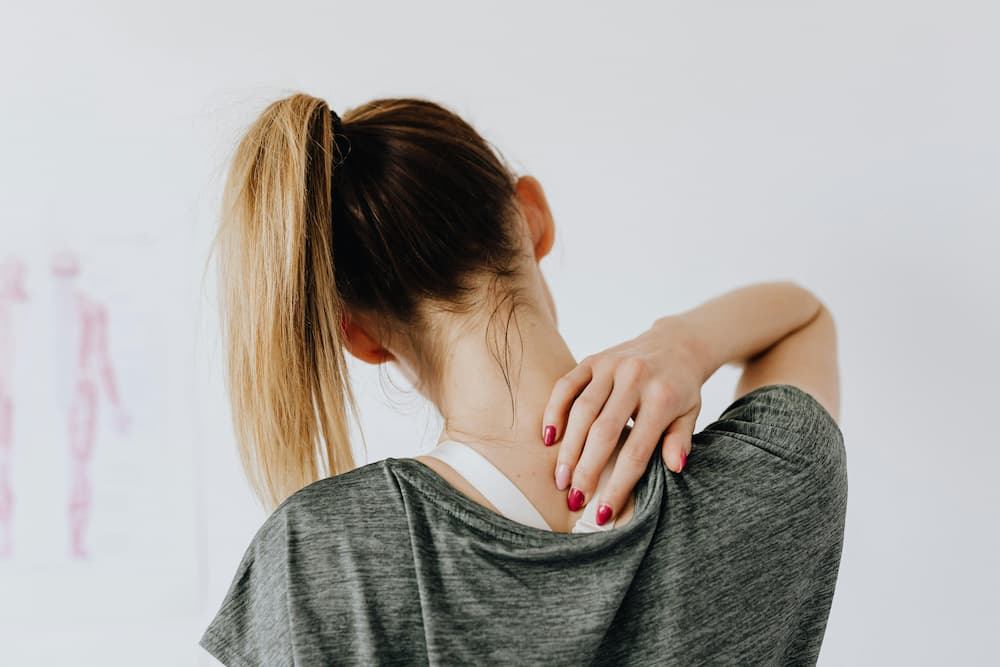
Eat for Relief: Foods That Help (and Hurt)
Below is a list of foods that can help moderate and reduce inflammation include:
- Fruits (Wu & Schauss, 2012). Citrus fruits such as oranges, lemons, and grapefruits are high in vitamin C and possess anti-inflammatory and antioxidant properties (Majdan et al., 2022).
- Berries including blueberries, strawberries, raspberries, and blackberries help to reduce stress and inflammation (Wu & Schauss, 2012)(Majdan et al., 2022).
- Vegetables that help with inflammation include: tomatoes, olives, garlic, broccoli, and leafy greens like spinach and kale (Wu & Schauss, 2012)(Lapuente et al., 2019).
- Nuts including almonds, walnuts, pistachios, cashews and hazelnuts (Wu & Schauss, 2012)(Salas-Salvadó et al., 2008).
- Wholegrains such as oats, barley, brown rice and quinoa (Wu & Schauss, 2012)(Lefevreet al., 2012).
- Fish are rich in omega-3 fatty acids. Types of fish that help reduce inflammation include Salmon, Mackerel, and Sardines (Ellulu et al., 2015).


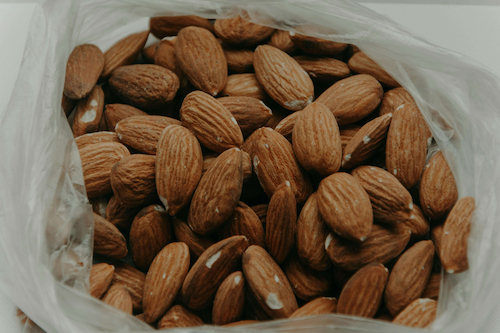
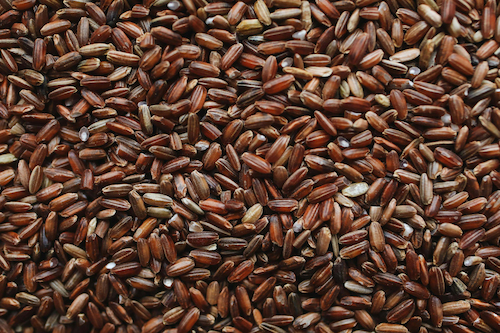
Foods to limit or avoid include:
- Red meat and processed meats like bacon, sausages and deli meats (Yu et al. 2024).
- Refined carbohydrates such as white bread, pastries and other processed grains (Yu et al. 2024).
- Alcohol (Yu et al. 2024).
- Added sugars: Sugary beverages like Coke, and desserts (Yu et al. 2024).
- Saturated fats & trans fats: Fried foods and processed snacks (Yu et al. 2024).
While diet plays a key role in managing inflammation, combining it with targeted support can enhance relief. For example, a joint pain cream can help ease inflammation and support joint pain relief, while a muscle pain relief cream may be beneficial for muscle aches, sprains, and strains.
Cooking Methods Make a Difference.
The anti-inflammatory properties of foods can be modified, increased or decreased as a result of particular cooking methods such as boiling, steaming or frying (Gunathilake, et al. 2018). The cooking methods of, raw, boiling, pan-frying, and toasting that have no added fats, and no added oil are associated with positive differences in several inflammatory markers (Rodríguez-Ayala et al., 2022)(Moreno-Franco et al. 2021). These include kidney function, vitamin D, thyroid hormones, and the preservation of key food nutrients (Rodríguez-Ayala et al., 2022)(Moreno-Franco et al. 2021). Cooking methods such as deep frying and stewing showed detrimental inflammatory profiles including lower levels of vitamin D (Rodríguez-Ayala et al., 2022). Herbs and spices beyond their seasoning properties, can also have a systematic impact on inflammation (Charneca et al, 2023). Herbs and spices such as cinnamon, garlic, coriander, ginger, turmeric, and saffron are popular spices to help reduce inflammation (Baliga et al., 2015). Curcumin is an active component found within turmeric. Curcumin has demonstrated potential as a treatment agent for mild osteoarthritis, a disease with an underlying inflammatory cause (Chin, 2016). It is effective in helping to reduce pain, and improve physical function, thus improving mild osteoarthritis suffers quality of life (Chin, 2016).
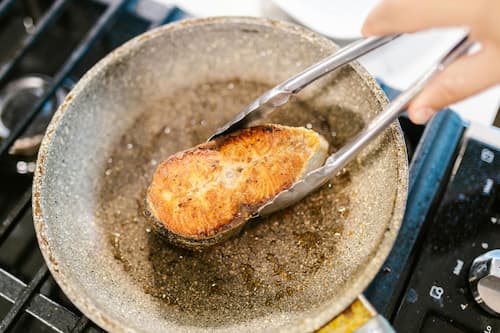
References
1) Baliga, M., Mane, P., Nallemgera, J., Thilakchand, K., Kalekhan, F. (2015). Foods and Dietary supplements in the prevention and treatment of disease in older adults, (41-49).
2) Charneca, S., Hernando, A., Costa-Reis, P., & Guerreiro, C. S. (2023). Beyond Seasoning-The Role of Herbs and Spices in Rheumatic Diseases.
3) Chin, K. (2016). Drug Design, Development and therapy, (10) 3029-3042.Chin, K.-Y. (2016). Doi:10.2147/dddt.s117432
4) Ellulu, M. S., Khaza’ai, H., Abed, Y., Rahmat, A., Ismail, P., & Ranneh, Y. (2015). Role of fish oil in human health and possible mechanism to reduce the inflammation. Inflammopharmacology, 23(2–3), 79–89.
5) Gunathilake, K. D. P. P., Ranaweera, K. K. D. S., & Rupasinghe, H. P. V. (2018). Influence of Boiling, Steaming and Frying of Selected Leafy Vegetables on the In Vitro Anti-inflammation Associated Biological Activities.
6) Rodríguez-Ayala, M., Banegas, J. R., Ortolá, R., Gorostidi, M., Donat-Vargas, C., Rodríguez-Artalejo, F., & Guallar-Castillón, P. (2022). Cooking methods are associated with inflammatory factors, renal function, and other hormones and nutritional biomarkers in older adults.
7) Moreno-Franco, B., Rodríguez-Ayala, M., Donat-Vargas, C., Sandoval-Insausti, H., Rey-García, J., Lopez-Garcia, E., Benegas, J., Rodríguez-Artalejo, F., Guallar-Castillón, P. (2021). Association of Cooking Patterns with Inflammatory and Cardio-Metabolic Risk Biomarkers.
8) Galland, L. (2010). Diet and Inflammation. Nutrition in Clinical Practice, 25(6), 634–640.
9) Genel, F., Kale, M., Pavlovic, N., Flood, V. M., Naylor, J. M., & Adie, S. (2020). Journal of Nutritional Science.
10) Lapuente, M., Estruch, R., Shahbaz, M., & Casas, R. (2019). Relation of Fruits and Vegetables with Major Cardiometabolic Risk Factors, Markers of Oxidation, and Inflammation. Nutrients, 11 (10), 2381.
11) Lefevre, M., Jonnalagadda, S. (2012). Effect of whole grains on markers of subclinical inflammation. Nutrition Reviews, 70 (7), 387–396.
12) Majdan, M., & Bobrowska-Korczak, B. (2022). Active Compounds in Fruits and Inflammation in the Body. Nutrients, 14 (12), 2496.
13) Philpot, U., & Johnson, M. I. (2019). Diet Therapy in the Management of Chronic Pain: Better Diet Less Pain?. Pain Management, 9(4), 335–338.
14) Rankin, J. (2004). Biological Mediators of Acute Inflammation. AACN Advanced Critical Care, 15 (1), 3-17.
15) Rondanelli, M., Faliva, M. A., Miccono, A., Naso, M., Nichetti, M., Riva, A., Fabio, G., De Gregori, M., Peroni, G., Perna, S. (2018). Food pyramid for subjects with chronic pain: foods and dietary constituents as anti-inflammatory and antioxidant agents. Nutrition Research Reviews, 31 (1).
16) Sala-Climent, M., López de Coca, T., Guerrero, M., Muñoz, F., López-Ruíz, M., Moreno, L., Alacreu, M., Dea-Ayuela, M. (2023). The effect of an anti-inflammatory diet on chronic pain: a pilot study.
17) Salas-Salvadó, J., , Casas-Agustench, P., Murphy, M., López-Uriarte, P., Bulló, M. (2008). The effect of nuts on inflammation.
18) Schmid-Schönbein, G. W. (2006). Annual Review of Biomedical Engineering, 8(1), 93–151.
19) Towery, P., Guffey, S., Doerflein, C., Stroup, K., Saucedo, S., Taylor, J. (2018). Chronic musculoskeletal pain and function improve with a plant-based diet. Complementary Therapies in Medicine, 40, 64-69.
20) Wu, X., & Schauss, A. G. (2012). Mitigation of Inflammation with Foods. Journal of Agricultural and Food Chemistry, 60(27), 6703–6717.
21) Yu X, Pu H, Voss M. (2024). Overview of anti-inflammatory diets and their promising effects on non-communicable diseases. British Journal of Nutrition. 2024;132(7):898-918.
Introducing fisiocrem sponsored athlete Rashanthi. She’s conquering marathons across the world, while still enjoying the local parkruns. Long-distance running remains Rashanthi’s greatest passion. Each marathon brings a deep sense of accomplishment, serving as both a personal challenge and a powerful way for her to reconnect with her goals.
Rashanthi feels incredibly fortunate to have secured one of just 20,024 bibs for the Olympic marathon. It was the first time it has been open to the public. It’s recognised as the toughest marathon course in Olympic history, it featured relentless climbs—including a steep ascent near the 32km mark that tested even the most seasoned runners.
Rashanthi’s primary goal for 2025 is to regain full fitness after managing a meniscus tear for the past 18 months. She’s focused on strength training, mobility work, and gradually rebuilding her running base with the aim of returning stronger than ever, hopefully in time for the Boston Marathon. It’s her final piece in her Six Star journey. While it may not happen this year, she’s steadily laying the groundwork to make it a reality when the time is right.
Her biggest challenge was running the 2024 New York City Marathon with a rolled ankle. She said, “Every step was painful, but my determination to finish never faltered.” The race pushed her resilience to the limit and served as a powerful reminder of how strong the mind can be when the body is under strain.
RASHANTHI’S TOP RECOVERY TIPS
“Prioritise rest and listen to your body. Recovery is as crucial as training. I rely on regular stretching, foam rolling, and massages.”
Rashanthi Wanigasekera
Introducing fisiocrem sponsored athlete Ang. She is currently back to focusing purely on running after spending a couple of years dabbling in triathlons. She’s gradually rediscovering her running mojo, slowly but surely!
2024 was a bit of a slower year for Ang when it came to fitness. She found herself not prioritising self-care as much, which impacted her overall energy and consistency. Despite that, she still managed to take part in a couple of memorable events—the Gold Coast Half Marathon and the final Dubbo Stampede, where she had the unique experience of running through the zoo.
Ang and her fiancé have signed up for the Hawke’s Bay Marathon in New Zealand this May, giving her a meaningful goal to focus on. The event has provided the perfect motivation to reignite her training and prioritise her health and fitness. She’s always thrived with a deadline, and having a race on the calendar has helped her stay accountable and excited about the journey ahead.
Ang draws daily inspiration and motivation from her fiancé, who constantly encourages her to be her best. He’s her biggest supporter and never hesitates to join her on wild running adventures. Ang is also lucky to have a tight-knit group of running friends who share her love for hitting the pavement (or trails).
ANG’S TOP RECOVERY TIPS
“You can never beat a cold chocolate milk after a long run – followed by a bath in spsom salts, and a good rub down with fisiocrem.
ANG BRYER
Inflammation is one of the body’s first biological responses within the immune system (Zhu et al., 2017). The body aims to repair tissue associated with infection, injury or irritation (Schmid-Schönbein, 2006). Some common causes of inflammation include obesity, stress, injury and bacteria within the body (Lieberthal et al., 2015)(Cristofori et al., 2021)(Liu et al., 2017).
Inflammation can be a symptom of a more serious condition or disease, like mild arthritis and mild osteoarthritis (OA)(Lieberthal et al., 2015). It can lead to pain, sleeping issues, fatigue, and mood alterations that can drastically affect one’s lifestyle (Dantzer et al., 2008).
Luckily, there are some factors we can change to reduce and manage inflammation. These include what we eat, how much we exercise, not smoking, and drinking less alcohol (Kantoret al., 2013). Other good ways to manage inflammation include oral and topical anti-inflammatories. These can help reduce inflammation and keep you moving comfortably.
Below are some helpful tips and guidance to help you reduce and manage inflammation in the body so you can keep moving.
Anti-Inflammatory Diet: What To Eat (and Avoid)
Nutrition and dietary patterns can influence the body’s inflammatory response (Galland, 2010). Therefore, a diet of high-antioxidant foods and drinks can help combat inflammation (Lu et al., 2015). Just as certain foods can help reduce inflammation, certain foods can also increase it.
Below is a list of anti-inflammatory foods that fight inflammation.
- Fish: Salmon & tuna (Triggs et al., 2010)
- Garlic & ginger (Parvez et al., 2019)
- Nuts: Almonds & walnuts (Parvez et al., 2019) (Rajaram et al., 2023)
- Leafy greens: Spinach & kale (Randhawa et al., 2015)
- Grains: Barley and wheat (Parvez et al., 2019)
- Fruits: Blueberries, strawberries, cherries, grapes (Joseph et al., 2014) (Parvez et al., 2019)
- Vegetables: Potatoes, carrots, and red peppers (Reddivari et al., 2019) (Parvez et al., 2019)

Certain processed and refined foods can contribute to and worsen inflammation, these include:
- Salt (Parvez et al., 2019) (Myles, 2014)
- Gluten (Myles, 2014)
- Sugar (Parvez et al., 2019): Soft drinks and desserts
- Saturated fat, trans fat, omega 6 fatty acids (Parvez et al., 2019): Beef and fried foods
- Alcohol (Parvez et al., 2019)
Having a balanced diet can help reduce and relieve inflammation and help support a healthy and active lifestyle. Just remember everything in moderation.
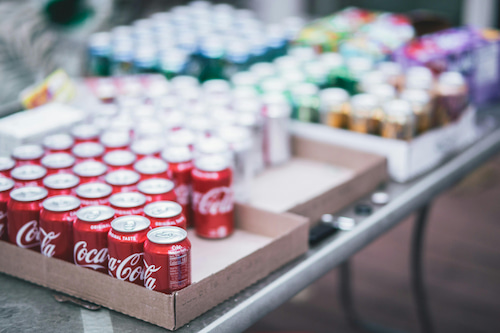
Movement & Recovery Around Inflammation
Exercise can both cause and reduce inflammation (Woods et al., 2011). However regular exercise has far more health benefits than a sedentary lifestyle that can lead to adverse health outcomes, such as obesity (Wanigatunga et al., 2022) (Febbraio, 2007).
Exercise can cause muscle and connective tissue damage, typically when exercise is done at high intensities for a prolonged duration (Woods et al., 2011). This is typically referred to as delayed onset muscle soreness (DOMS). This temporary discomfort occurs as the body adapts to the new overload stress or new level of activity. Eventually leading to increased strength within the muscles.
Regular cardiovascular exercise training can help reduce and moderate inflammation. Exercise activity such as brisk walking or low-impact activities, can help improve circulation and reduce stiffness (Woods et al., 2011).
Low-impact exercises can include:
- Swimming – Reduces pressure on the joints
- Yoga or stretching – Helps to maintain flexibility and mobility.
- Inadequate sleep can also lead to increased inflammation.
Therefore it is important to maintain a good sleep duration and ensure you have a quality sleep through good sleeping patterns. This can help reduce inflammation and allow the body time to recover (Simpson et al., 2008).
Anti-Inflammatory Creams/Gels For Pain: What You Need to Know
Topical anti-inflammatory gels and creams have many advantages over oral anti-inflammatory tablets, with reduced incidence of systematic side effects (Stanos et al., 2015)(Argoff et al., 2013). Topical creams/gels are effective in the management of inflammation and pain, associated with conditions like mild osteoarthritis (Stanos et al., 2015).
Topical pain relief creams/gels like fisiocrem Solugel & fisiocrem Joint Ease can help relieve inflammation and soreness. Both fisiocrem products can be used in conjunction with oral anti-inflammatories, unlike other topical gels.
fisiocrem Solugel - Muscle pain & inflammation
fisiocrem Solugel is a clinically tested pain relief gel for muscle pain and soft tissue injuries (Ramon et al., 2022). In a randomised, double-blind, placebo-controlled, clinical trial fisiocrem Solugel was shown to significantly reduce pain and improve mobility within minutes of application; used twice daily, it continued to improve musculoskeletal pain and mobility over 14 days, showing the benefit of both immediate and longer-term pain relief (Ramon et al., 2022)
fisiocrem Joint Ease - Mild Joint pain & inflammation
fisiocrem Joint Ease is formulated to help relieve symptoms associated with mild arthritis. In particular, it helps reduce inflammation and stiffness within the joint area improving joint mobility.
FAQ's - All about inflammation
Do’s: Eat a healthy balanced diet rich with anti-oxidant foods. Develop regular exercise habits and ensure adequate sleeping patterns. Utilise topical pain relief products to manage inflammation and swelling.
Don’ts: Eat a diet high in sugar, fats and salt. Operate on minimal sleep and consume large sums of alcohol.
A traditional Mediterranean diet has a high ratio of monounsaturated (MUFA) to saturated (SFA) fats and polyunsaturated fatty acids (PUFAs). This diet has an abundance of fruits, vegetables, legumes, and grains, that have anti-inflammatory effects (Galland, 2010).
A traditional Mediterranean diet has anti-inflammatory properties. This diet places emphasis on fruits, vegetables, and olive oil consumption, with limited meat consumption (Tsigalou et al., 2020).
An anti-inflammatory diet is rich in omega-3s and polyphenols. An important aspect of an anti-inflammatory diet is the reduced intake of omega-6 fatty acids (Sears et al., 2015).
An anti-inflammatory cream like fisiocrem Solugel and fisiocrem Joint Ease can reduce swelling and pain. They help alleviate discomfort and reduce symptoms from sprains, strains, sports injuries and soft tissue trauma.
A topical anti-inflammatory cream like fisiocrem Solugel and fisiocrem Joint Ease can help reduce swelling and relieve pain. Explore the fisiocrem product range.
In conclusion making mindful changes to diet, exercise habits, and lifestyle can help reduce inflammation and improve movement and health outcomes. Incorporating topical pain relief creams/gels into your routine can assist with pain management and inflammation.
Discover how fisiocrem can support your recovery.
References
1) Argoff, C. E. (2013). Topical Analgesics in the Management of Acute and Chronic Pain. Mayo Clinic Proceedings, 88(2), 195–205.
2) Cristofori, F., Nadia Dargenio, V., Dargenio, C., Leonardo Miniello, V., Barone, M., Francavilla, R. (2021). Anti-Inflammatory and Immunomodulatory Effects of Probiotics in Gut Inflammation: A Door to the Body. Intestinal Dysbiosis in Inflammatory Diseases, 12.
3) Dantzer, R., Capuron, L., Irwin, M., Miller, A., Ollat, H., Perry, V., Rousey, S., Yirmiya, R. (2008). Identification and treatment of symptoms associated with inflammation in medically ill patients, 33-22.
4) Febbraio, M. A. (2007). Exercise and inflammation. Journal of Applied Physiology, 103(1), 376–377.
5) Galland, L. (2010). Diet and Inflammation. Nutrition in Clinical Practice, 25(6), 634–640.
6) Hess, J. M., Stephensen, C. B., Kratz, M., & Bolling, B. W. (2021). Exploring the Links between Diet and Inflammation: Dairy Foods as Case Studies. Advances in Nutrition, 12.
7) Joseph, S. V., Edirisinghe, I., & Burton-Freeman, B. M. (2014). Berries: Anti-inflammatory Effects in Humans. Journal of Agricultural and Food Chemistry, 62(18), 3886–3903.
8) Kantor, E. D., Lampe, J. W., Kratz, M., & White, E. (2013). Lifestyle Factors and Inflammation: Associations by Body Mass Index.
9) Lieberthal, J., Sambamurthy, N., Scanzello, R. (2015). Retrieved from: https://www.sciencedirect.com/science/article/pii/S106345841501300X
10) Lieberthal, J., Sambamurthy, N., Scanzello, R. (2015). Retrieved from: https://www.sciencedirect.com/science/article/pii/S106345841501300X
11) Liu, y., Wang, Y., Jiang, C. (2017). Inflammation: The Common Pathway of Stress-Related Diseases. Brain Health and Clinical Neuroscience, 11.
12) Lu, C., Yen, C. (2015) Antioxidative and anti-inflammatory activity of functional foods, 2.
13) Metsios, G. S., Moe, R. H., & Kitas, G. D. (2020). Exercise and inflammation. Best Practice & Research Clinical Rheumatology, 34(2), 101504.
14) Myles, I. A. (2014). Fast food fever: reviewing the impacts of the Western diet on immunity. Nutrition Journal, 13(1).
15) Parvez, M., Akanda, K. (2019). Foods and Arthritis: An Overview, 3-22
16) Ramon et al Ortho & Rheum Open Access J 20(1): OROAJ.MS.ID.556028 (2022) This study was funded by fisiocrem.
17) Randhawa, M. A., Khan, A. A., Javed, M. S., & Sajid, M. W. (2015). Chapter 18 – Green Leafy Vegetables: A Health Promoting Source. 205-220.
18) Rajaram, S., Damasceno, N. R. T., Braga, R. A. M., Martinez, R., Kris-Etherton, P., & Sala-Vila, A. (2023). Effect of Nuts on Markers of Inflammation and Oxidative Stress: A Narrative Review. 15(5), 1099.
19) Reddivari, L., Wang, T., Wu, B., & Li, S. (2019). Potato: an Anti-Inflammatory Food. American Journal of Potato Research, 96(2), 164–169.
20) Schmid-Schönbein, G. (2006). Analysis of inflammation. Annual Review of Biomedical Engineering, 8(1), 93–151.
21) Sears, B. (2015). Anti-inflammatory Diets. Journal of the American College of Nutrition, 34(sup1), 14–21.
22) Simpson, N., & Dinges, D. F. (2008). Sleep and Inflammation. Nutrition Reviews, 65(3), S244–S252.
23) Stanos, S. P., & Galluzzi, K. E. (2015). Topical Therapies in the Management of Chronic Pain. Postgraduate Medicine, 125(1), 25–33.
24) Triggs, C. M., Munday, K., Hu, R., Fraser, A. G., Gearry, R. B., Barclay, M. L., & Ferguson, L. R. (2010). Dietary factors in chronic inflammation: Food tolerances and intolerances of a New Zealand Caucasian Crohn’s disease population. 690(1), 123–138.
25) Tsigalou, C., Konstantinidis, T., Paraschaki, A., Stavropoulou, E., Voidarou, C., & Bezirtzoglou, E. (2020). Mediterranean Diet as a Tool to Combat Inflammation and Chronic Diseases. An Overview. Biomedicines, 8(7), 201.
26) Wanigatunga, A. A., Chiu, V., Cai, Y., Urbanek, J. K., Mitchell, C. M., Miller, E. R., Christenson, R. H., Rebuck, H., Michos, E. D., Juraschek, S. P., Walston, J., Xue, Q.-L., Bandeen-Roche, K., Appel, L. J., & Schrack, J. A. (2022). Patterns of Daily Physical Movement, Chronic Inflammation, and Frailty Incidence, 281-288.
27) Woods, J. A., Wilund, K. R., Martin, S. A., & Kistler, B. M. (2011). Exercise, Inflammation and Aging. Aging and Disease, 3(1), 130.
28) Zhu, F., Du, B., & Xu, B. (2017). Anti-inflammatory effects of phytochemicals from fruits, vegetables, and food legumes: A review. Critical Reviews in Food Science and Nutrition, 58(8), 1260–1270.
Introducing fisiocrem sponsored athlete Beth. She enjoys running, but after having a baby in January, she is currently in her walking era.
Beth has decided to shift her focus to shorter distances in her running journey. She plans to dedicate this time to her speed and refining her technique. Beth wants to build a solid foundation before taking on longer races again.
Beth ran two half marathons while pregnant! Earlier in the year, she completed the Hoka Half Marathon in Sydney, and then in October she tackled the Melbourne Half Marathon at 26 weeks pregnant. Remarkably, she was just 30 seconds shy of achieving a personal best despite being pregnant. She says, “I can’t believe I actually ran two Half Marathons while pregnant.”
Beth travelled to Mexico, Los Angeles, and the UK while pregnant and training for half marathons, describing it as the ultimate superhero status in 2024! It was an incredible whirlwind of experiences, balancing travel, pregnancy, and her training, but she loved every second of it.
A race that Beth prioritises every year is the MS Walk, Run, and Roll in Melbourne. She was diagnosed with multiple sclerosis in 2017, before she became a runner, which has made this event especially meaningful to her. Each year she focuses on fundraising for the event to give back.
She has an amazing network of supporters, ranging from close friends, family and those who have followed her running journey with multiple sclerosis. She was once told she wouldn’t be able to run beyond 5km, yet her progress has surpassed everyone’s expectations. With three half marathons completed, she is grateful for the incredible support she has received along the way. Her journey has been nothing short of inspiring, and the encouragement from her supporters has played a vital role in her success.
BETH’S TOP RECOVERY TIPS
“I’ve always had to prioritise rest and sleep while balancing running with an autoimmune disease. I truly believe that with enough sleep, anything is achievable!”
BETH CARMAN
Introducing fisiocrem sponsored athlete Stacey, a dedicated parkrun enthusiast who’s looking for more challenges in 2025.
Running remains Stacey’s go-to activity. In 2024, she faced some health challenges, including weight gain, which made running less enjoyable. However, she made changes towards the end of last year and hopes to regain her health and fitness. Stacey has dedicated 2025 to improving her fitness and health, as she plans to lean on her running tribe for support.
Stacey says, “despite a decline in my fitness last year, I was proud to have completed one of my favourite events – the Endo-End Fun Run.” Stacey would love to return and compete in the Blackall50 this year, but she realises that running 50km isn’t achievable yet. However, 2025 will be her year to get back out there and participate in the Bridge to Brisbane, River Run, and possibly Run Army.
In 2024, Stacey and her running tribe had a great time travelling to various parkruns and embracing their role as ‘parkrun tourists.’ They had fun exploring different locations and deciding which ones were worth revisiting, especially if they had great coffee spots. Some of Stacey’s most enjoyable experiences were the ones where they used the 5km route as a ‘walk and talk’ session.
Stacey’s partner is her greatest supporter, always encouraging her to pursue new endeavours and backing her goals. Stacey’s daughter inspires her to be the best and healthiest version of herself, so she can serve as a positive role model. When it comes to running, Stacey’s running tribe is her strongest support system. They make an extra effort to pick her up for parkruns every Saturday, ensuring she doesn’t ‘accidentally’ sleep in.
STACEY’S TOP RECOVERY TIPS
“Take time to listen to your body, including taking time to rest when you need it. Also a good sleep and stretching routine will help prevent night-time muscle twitches.”
STACEY WARD
Pain after exercise is something anyone who works out regularly knows well. After a workout, you may feel great, but the next day, sore muscles can make movement difficult. This discomfort, known as delayed onset muscle soreness (DOMS), typically occurs 1 to 2 days after exercise (MacIntyre et al., 1995).
While it’s a normal part of building strength and endurance, there are effective ways to manage muscle pain and speed up recovery. Discover the reasons behind post-exercise soreness, ways to relieve it, and how fisiocrem Solugel can support your recovery.
What causes muscle pain after exercise?
Muscle soreness after exercise occurs when muscles experience micro-tears because of intense physical activity (Cheung et al., 2003). This is especially common when trying new exercises or increasing workout intensity. The body’s inflammatory response to these tears leads to swelling and inflammation, which contributes to pain and stiffness. Delayed onset soreness is most common after eccentric exercises, like downhill running or lowering weights (Gulick, et al., 1996).
Muscle soreness is a sign that your body is adapting and growing. Severe discomfort may indicate a more serious soft tissue injury requiring additional care.
What helps sore muscles after a workout?
Here are some evidence-based strategies to manage soreness and support recovery:
1. Stay Hydrated
Hydration plays a crucial role in flushing out toxins and reducing muscle cramping. Drink plenty of water before, during, and after exercise to support overall muscle function (Chodkowski, 2024).
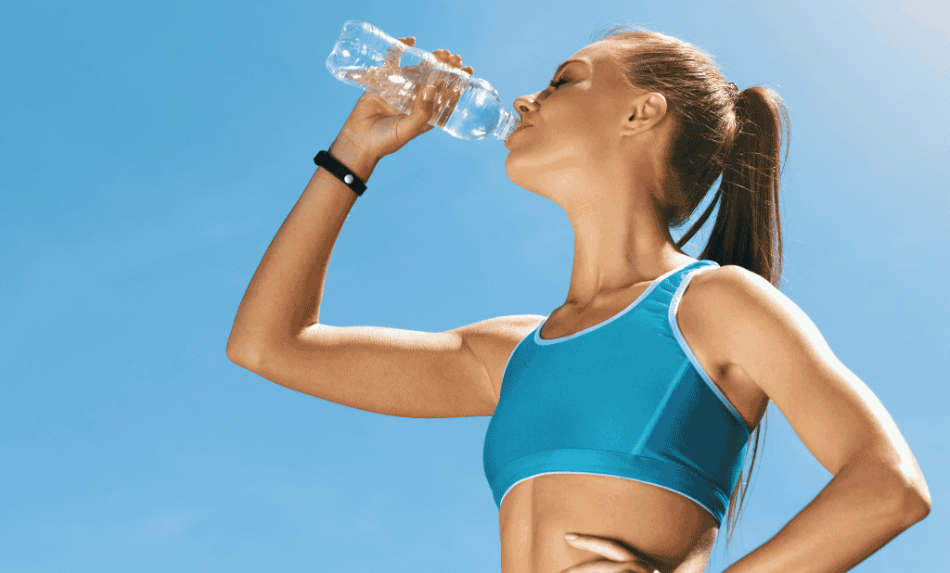
2. Active recovery
Gentle movements like walking, cycling, or stretching help increase blood flow to sore areas, promoting faster recovery. Active recovery can also reduce stiffness associated with DOMS.
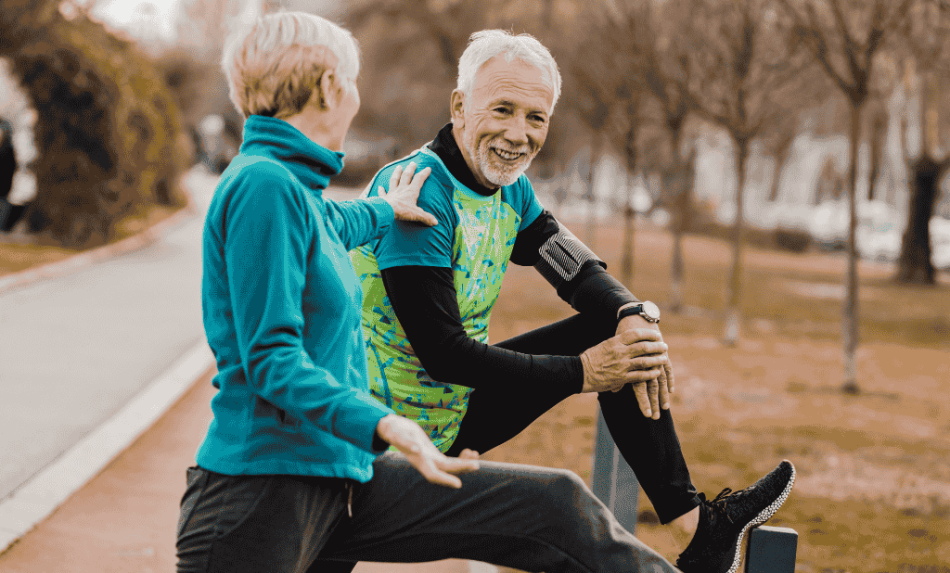
3. Cold and heat therapy
Applying ice to sore muscles in the first 24 hours can help reduce inflammation. Afterwards, using a heat pack may relieve stiffness and promote relaxation (Wang et al., 2021).
4. Massage and foam rolling
Using a foam roller or massaging sore muscles improves circulation, reduces tension, and aids in recovery (Wiewelhove, et al., 2019).
5. Topical pain relief gels
Products like fisiocrem Solugel are ideal for managing post-exercise muscle pain. Fisiocrem Solugel is a topical anti-inflammatory gel containing naturally derived active ingredients and menthol. Topical gels like fisiocrem Solugel help to relieve soreness and reduce swelling associated with soft tissue injuries. Simply apply the gel to the affected area for effective muscle pain relief (Ramon et al., 2022).
How to prevent muscle soreness
Although it’s impossible to avoid all muscle soreness, incorporating these strategies can help minimise discomfort:
- Warm-up and cool down: Preparing muscles with dynamic stretches before exercise and cooling down afterwards, can reduce stiffness.
- Gradual progression: Increase workout intensity gradually to allow muscles time to adapt.
- Maintain good nutrition: Eating a balanced diet with protein and anti-inflammatory foods helps repair muscles and relieve pain.
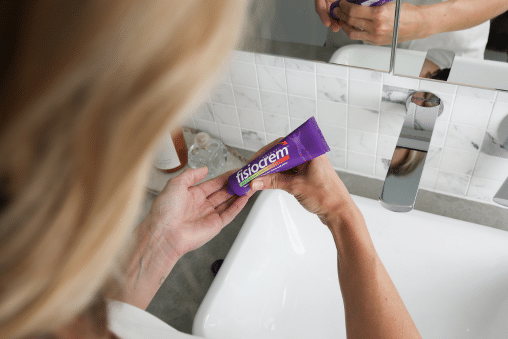
How to relieve muscle pain after exercise
When muscle pain strikes, quick action can help reduce discomfort and get you back to your routine faster. Stretching, using foam rollers, or applying a topical gel designed for muscle pain relief are great immediate remedies. Keeping inflammation in check is key to reducing sore muscles after a workout.
When to seek professional help
If muscle pain lasts more than a week, or if there is severe swelling or limited movement, consult a healthcare professional. Persistent pain may indicate a more serious injury, such as a strain or sprain, that requires specialised treatment.
Muscle soreness is a natural part of physical fitness, but it doesn’t have to slow you down. Incorporating recovery strategies like hydration, active recovery, and topical pain relief gels like fisiocrem Solugel can keep you moving.
If you have mild discomfort or a soft tissue injury, taking steps to manage inflammation will help you to keep moving.
References:
- Cheung, K., Hume, P. A., & Maxwell, L. (2003). Sports Medicine, 33(2), 145–164.
- Chodkowski, J. (2024). The Role of Nutrition and Hydration in Injury Prevention and Recovery: A Review.
- Gulick, D. T., Kimura, I. F., Sitler, M., Paolone, A., & Kelly, J. D. (1996). Various treatment techniques on signs and symptoms of delayed onset muscle soreness.
- MacIntyre, D. L., Reid, W. D., & McKenzie, D. C. (1995). Sports Medicine, 20(1), 24–40.
- Ramon et al Ortho & Rheum Open Access J 20(1): OROAJ.MS.ID.556028 (2022) This study was funded by fisiocrem.
- Wang, Y., Li, S., Zhang, Y., Chen, Y., Yan, F., Han, L., Ma, Y. (2021). Physical therapy in sport, 48, 177-187.
- Wiewelhove, T., Döweling, A., Schneider, C., Hottenrott, L., Meyer, T., Kellmann, M., Pfeiffer, M., Ferrauti, A. (2019). Exercise Physiology. A meta-analysis of the effects of foam rolling on performance and recovery, 10.
Introducing fisiocrem sponsored athlete Nikki Sorrell a hybrid athlete looking to take on her first Hyrox event this month!
Nikki really enjoys the hybrid racing events that are currently gaining popularity. She’s tried DEKA, which she found to be awesome, and she’s signed up for her first Hyrox in mid-December.
2024 was a hectic year for work-related travel, which meant she couldn’t focus as much on her training and events. However, she did manage to sign up last minute for the UTA100, an experience that was nothing short of incredible. The event took her through the stunning Blue Mountains, where she achieved her goal of finishing the 100km in under 24 hours.
Nikki is excited for 2025 and eager to dive back into training. Her first step is locking in events, so she has specific targets to work toward, and she plans to structure her training around them.
As Nikki looks ahead to events in 2025, she’s been building an extensive bucket list, with the Larapinta Trail high on her list of things to do.
She draws inspiration from many people and finds motivation in the small things. Those daily 1%-ers over time, lead to big gains. Nikki is also incredibly grateful for the strong support network she has, including her husband, family, gym community, friends, and training buddies, as well as the wider community of the sports she participates in.
For Nikki, every training session or event holds a special memory, especially those spent out in nature. It’s something that truly grounds her, reminding her that she gets to do this. She is always thankful for the journey she’s on and the experiences she’s able to have.
NIKKI’S TOP RECOVERY TIPS
“Utilise strategies to check in with your body to reduce the risk of injury and optimise health and performance. This is a daily non-negotiable for me, and can be as simple as some stretching upon waking/getting up, and I will always prior to training/events, do things like foam rolling, dynamic stretching and band work to prepare for upcoming physical activities.”
NIKKI SORRELL
As January rolls in, so do our fitness goals and New Year’s resolutions. Preparing for success starts before your workout. Whether you are stepping into the gym for the first time, returning after a break, or starting a new fitness plan.
Starting strong can help you avoid problems like injury and muscle pain. This keeps you motivated to reach your goals all year.
Here is a comprehensive guide to preparing effectively for a workout and maintaining optimal performance.
1. Set Clear Intentions for Your Workout
A workout without a plan can lead to wasted time or overexertion. Decide what you want to achieve whether it’s improving cardio fitness, building strength, or trying something new like yoga. Having a clear goal will help you structure your session and focus on what matters.
2. Hydrate, Hydrate, Hydrate
Proper hydration is essential for muscle function and endurance. Aim to drink water throughout the day, not just right before you workout. If you’re exercising for an extended period or in the heat, consider an electrolyte drink to replenish lost minerals.
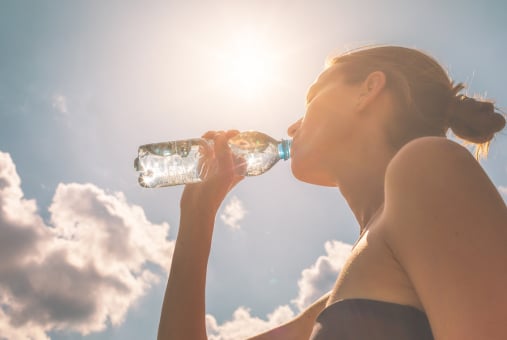
3. Fuel Your Body the Right Way
Your pre-workout nutrition plays a crucial role in optimising your performance. Consuming a light snack containing carbohydrates and protein can provide the necessary energy to support your workout session. Good options include a banana with peanut butter or a slice of whole-grain toast. Avoid heavy or greasy meals that may weigh you down.
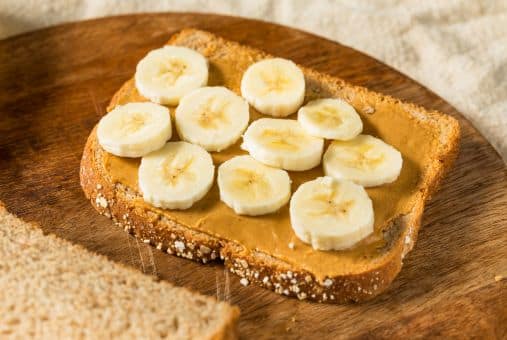
5. Stretch Strategically
While static stretches are better suited for after a workout, dynamic stretches are ideal for pre-exercise. These involve movements, such as lunges with a twist or shoulder rolls, and help prime your muscles for action.
To learn about the benefits of different types of stretching, read our guide. It covers static and dynamic stretching. You can find helpful tips on how to add them to your routine.
6. Check Your Gear
6. Check Your Gear
Selecting appropriate workout attire is essential for ensuring comfort and performance during exercise. Choose breathable, moisture-wicking fabrics, and make sure your shoes provide adequate support for your activity. Don’t forget to check any fitness equipment you’ll be using for safety and functionality.
7. Start Slow and Listen to Your Body
Jumping into a new workout plan with full energy too soon can lead to injury. Start at a pace that feels manageable and gradually increase the intensity over time. Listen to your body —if you experience discomfort or soreness, allow yourself time to rest and recover.
8. Cool Down Post-Workout
Although it occurs after your workout rather than before, incorporating a cool-down routine is vital. Cooling down helps gradually lower your heart rate and reduce muscle stiffness. Devote a few minutes to light walking or stretching to support recovery and enhance flexibility.
Support Your Muscles with fisiocrem Solugel - Muscle Pain Relief Gel
Even with careful preparation, muscle aches and soreness can still happen. This is especially true when starting a new fitness routine or increasing activity. This is where fisiocrem Solugel can help provide muscle pain relief.
Specifically formulated with naturally derived active ingredients and menthol, fisiocrem Solugel helps to alleviate symptoms associated with muscle strains, sprains, and soft tissue injuries.
Applying fisiocrem Solugel after your workout can help relieve muscle aches and pains so you can keep moving. fisiocrem Solugel helps you stay focused on your fitness goals.
Shop fisiocrem Solugel – Gel for sore muscles.
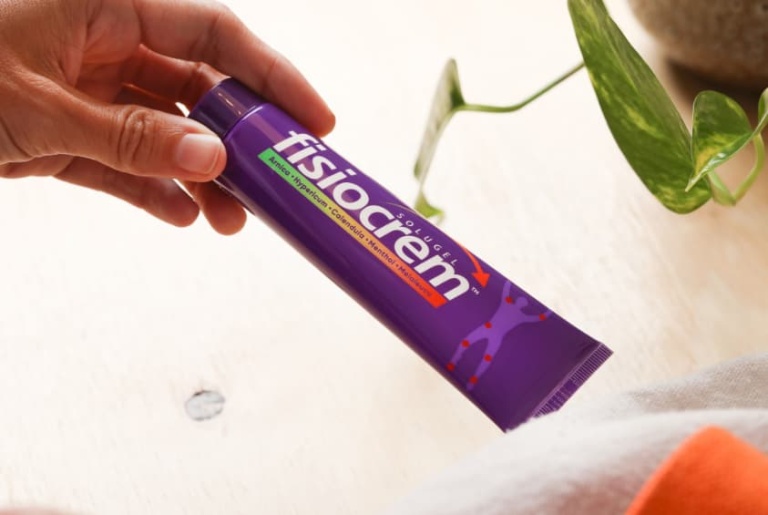
Make This Year Your Best Yet
By following these essential steps before your workout, you’ll build a strong foundation for all your workouts. Fisiocrem actively supports your journey toward an active and healthy lifestyle.
Connect with us on Instagram, Facebook, and Strava to stay engaged and informed. Track your progress, share your achievements, and find inspiration.
We share helpful tips, fun challenges, and motivational content to keep you active and focused on your goals all year round. Let’s work together to make this your most successful and active year yet—with fisiocrem by your side!
FAQ's: What to Do Before a Workout
Spend about 5-10 minutes warming up. Focus on dynamic movements that get your blood flowing and prepare your muscles for exercise, such as leg swings, arm circles, or light cardio.
A small, balanced snack that includes carbohydrates and protein is ideal.
No, it’s important to start slow and listen to your body. Begin at a manageable pace, and gradually increase the intensity over time to avoid injury.
Muscle soreness is common, especially if you’re new to exercise. Using a product like fisiocrem Solugel can help relieve pain and discomfort. Simply apply the gel to sore muscles after your workout to speed up recovery.
Wholesale & Practitioners
fisiocrem Australia is devoted to helping you manage your pain, and we have been since 2009. We develop high-quality topical pain relief products that stop pain from interfering with your regular activity.
Are you visiting from New Zealand?
Visit fisiocrem New Zealand here

